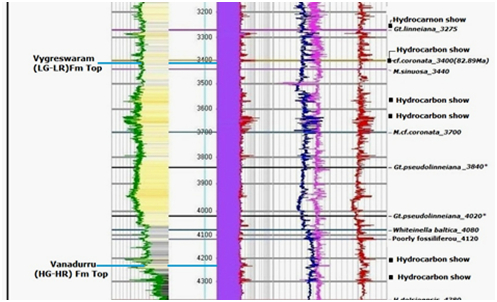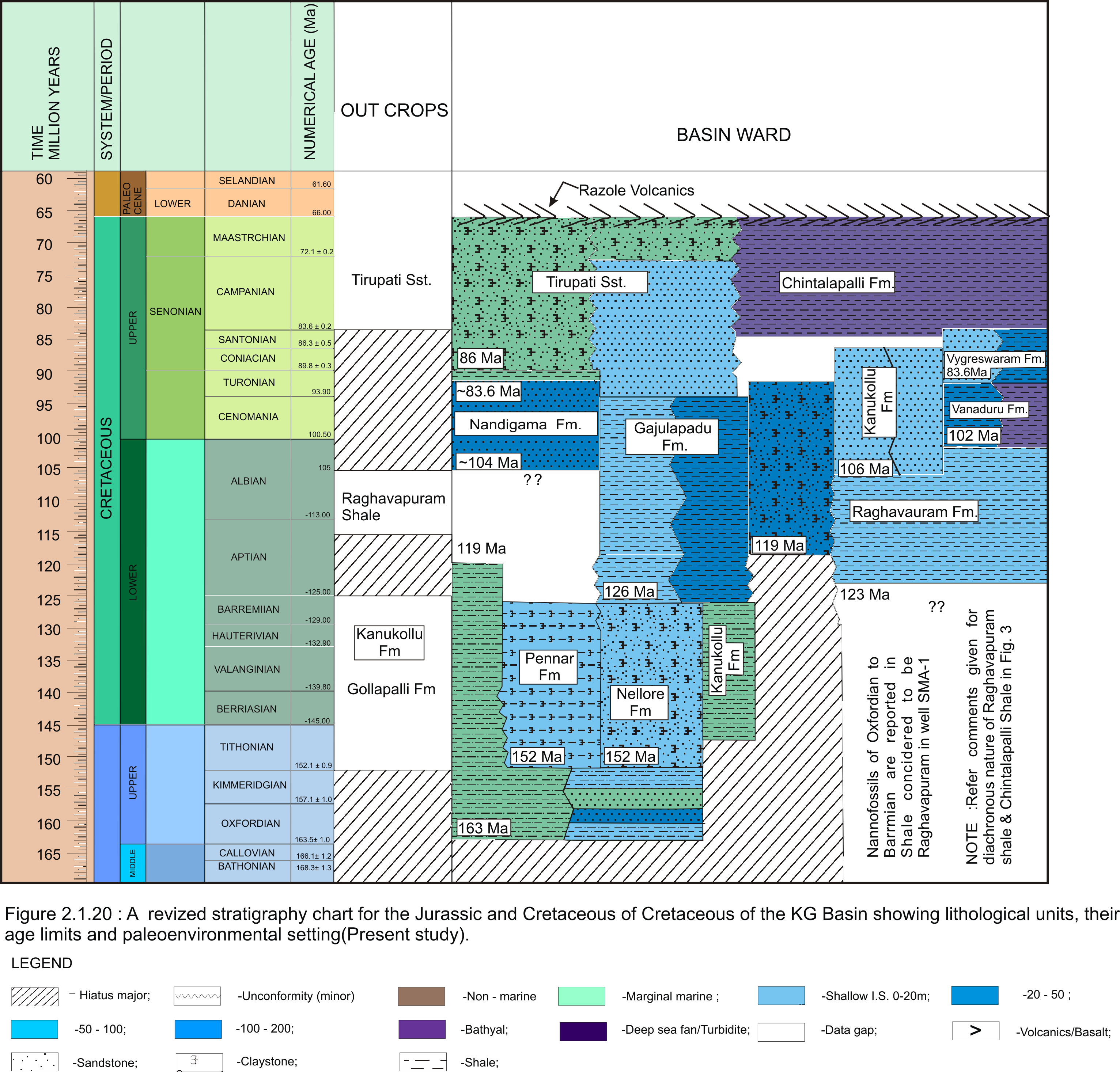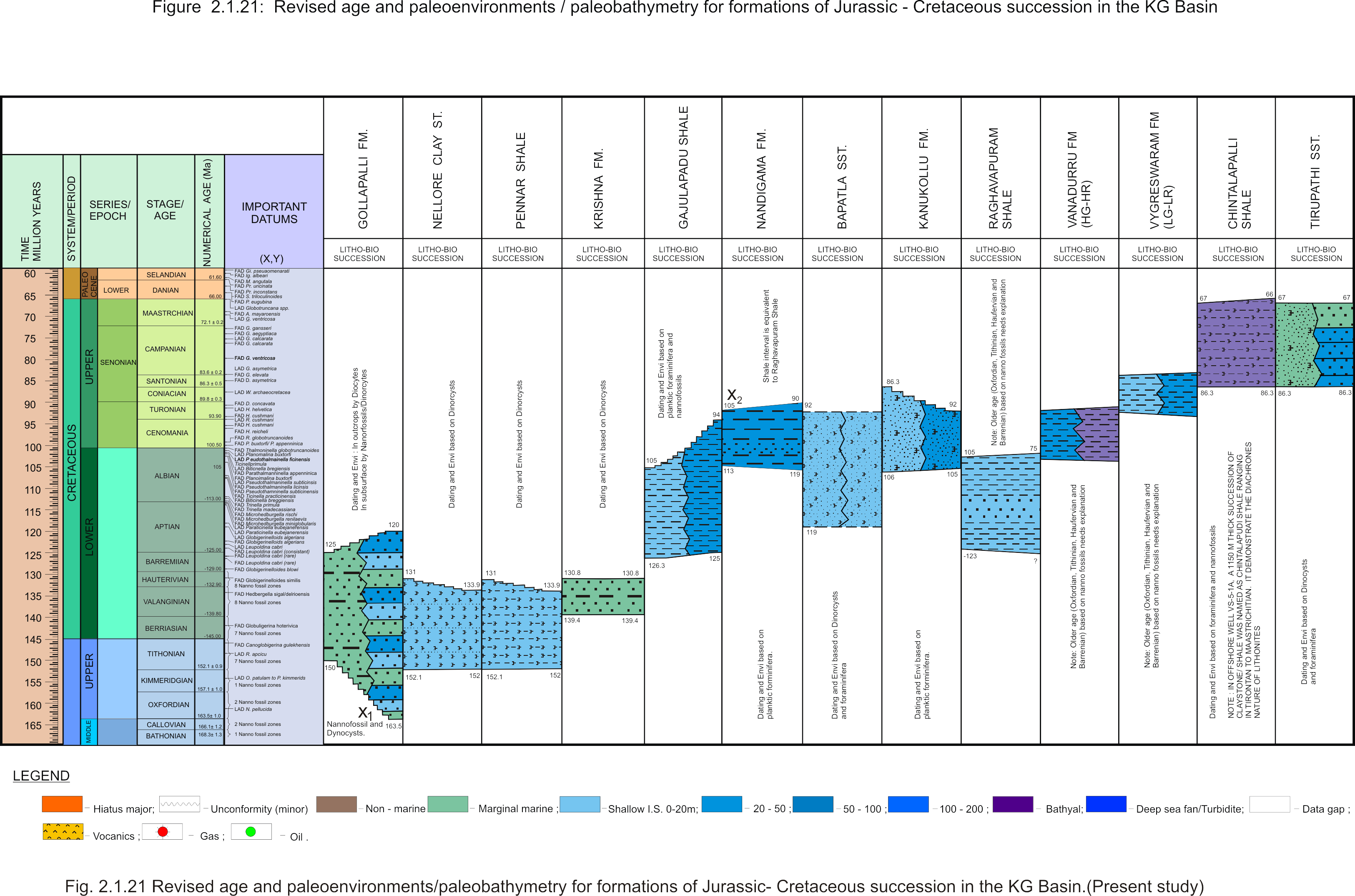Vygreswaram Fm
Type Locality and Naming
BASINAL (Local): The type section is in the well Vygreswaram South West-A (VGSW-A) (depth interval: 3740-4225 m). The hypostratotype is in the well Kottalanka-B (KL-B) (depth interval: 3600-4240 m). It was named after the Vygreswaram village by Raju et al. (2020 in press). [Original Publication: Raju, D.S.N., Reddy, A.N., Shandilya, A., Sagwar, D.P., Kamaraju, A.V.V.S., Thomas, P.D. and Pradeep Durge. (in press) Integrated Mesozoic Stratigraphic Classifications of the Krishna-Godavari Basins of India, In a perspective of Hydrocarbon Exploration – An Overview]. Reference well: Well Kottalanka-B (KL-B), Interval-3600-4240 m; thickness-640 m
Lithology and Thickness
Claystone. This unit consists mostly of clay/claystone with minor interbeds of sand/sandstone and siltstone. Clay is light gray to gray, soft, sticky and washable. Claystone is light gray, dark gray, grayish brown, moderately hard, compact, and fissile to moderately fissile, occasionally silty, pyritic and very feebly calcareous, claystone tending towards shale. Sand is colorless, dirty white, smoky, medium to fine grained, subangular to subrounded, moderately sorted. Sandstone is light grayish white, dirty white, light brownish, light yellowish, soft to moderately hard, occasionally argillaceous with calcareous cement and traces of pyrite. Siltstone is dirty white, moderately hard, moderately compact, associated with very fine grained and occasionally very feebly calcareous This formation mainly consists of Claystone with minor interbeds of Sandstone and Siltstone. It has a thickness varying from 485-640 m.
[Figure: Lithology, GR, Resistivity and planktic datums of the holostratotype of Vygreswaram Formation in the Well VGSW-A (modified after well completion report, ONGC, Raju, 2017)]
[Figure: A revised stratigraphy chart for the Jurassic and Cretaceous of the KG Basin showing lithological units, their age limits and paleoenvironmental setting (present study) in Raju et al., 2021, ONGC Bulletin, Special Issue, Vol. 56, No. 2]
Relationships and Distribution
Lower contact
Unconformable on the Vanadurru Fm. The hiatus at lower boundary is prevalent in the Cauvery and KG basins and related to the rise of the Marion hot mantle plume at ~90-88 Ma.
Upper contact
Unconformable with the Chintalapalli Fm.
Regional extent
GeoJSON
Fossils
Whiteinella baltica, Marginotruncana pseudolinneiana, M. coronate, and M. sinuosa.
Age
Depositional setting
Outer neritic-Bathyal
[Figure: Revised age and paleoenvironments/paleobathymetry of formations of Jurassic-Cretaceous succession in KG Basin in Raju et al., 2021, ONGC Bulletin, Special Issue, Vol. 56, No. 2]
Additional Information


